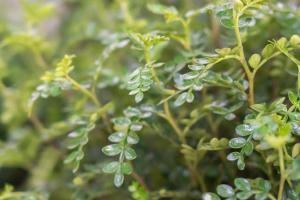How to Install Drip System for Potted Plants
Installing a drip system for your potted plants is a great way to conserve water and time. A drip system will deliver water right to the roots of your plants, ensuring that they stay hydrated without wasting any water. It’s also a great way to automate your watering, leaving you more time to enjoy your plants. Here’s how to install a drip system for your potted plants:
Materials Needed:
Before you get started, make sure you have the following materials:
Drip tubing - measure the length needed based on the number and size of your pots
Barbed connectors
Emitters
Pressure regulator
Timer (optional)
Scissors or tubing cutter
Pliers
Step 1: Connect the tubing to the water source
Begin by connecting the drip tubing to your water source. You can do this by using a hose adapter or by connecting directly to your faucet. Be sure to use a pressure regulator if you’re connecting directly to your faucet to ensure that the pressure does not exceed the limit of the tubing.
Step 2: Lay out the tubing
Unroll the tubing and lay it out alongside your pots. Cut the tubing to length, leaving a few extra inches near the spigot in case you need to adjust the length.
Step 3: Connect the tubing to the pots
Using barbed connectors, connect the tubing to each pot. Be sure to measure the distance from the tubing to the pot before cutting the tubing to ensure a good fit. Use pliers to crimp the connector onto the tubing, ensuring a secure fit.
Step 4: Add emitters to each pot
Attach an emitter to each pot. Emitters are small devices that slowly drip water into the soil. You can choose the flow rate of your emitters based on your plant’s watering needs. Be sure to test the emitters before adding soil to the pots to ensure they are working correctly.
Step 5: Backfill the soil
Once the emitters are in place and working correctly, you can add soil to the pots. Be sure to cover the tubing and emitters with soil to prevent them from being damaged or dislodged.
Step 6: Test the system
Once your pots are filled with soil, turn on the water to test the system. Make sure all the emitters are releasing water at the correct rate and that there are no leaks in the tubing.
Step 7: Set up a timer (optional)
If you want to automate your watering even further, you can set up a timer to control when the water is turned on and off. This will ensure that your plants get watered even when you’re not around.
Now that you know how to install a drip system for your potted plants, you can enjoy the benefits of efficient and automated watering. Your plants will thank you for keeping them hydrated while conserving water at the same time.

 how many times do yo...
how many times do yo... how many planted tre...
how many planted tre... how many pine trees ...
how many pine trees ... how many pecan trees...
how many pecan trees... how many plants comp...
how many plants comp... how many plants can ...
how many plants can ... how many plants and ...
how many plants and ... how many pepper plan...
how many pepper plan...
































